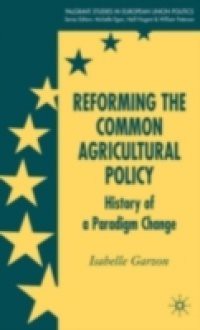Why did the EU's Common Agricultural Policy (CAP) remain unchanged for more than thirty years and then reform three times in a decade? Did the reforms really produce a change in the values and goals of the European agricultural policy? These are the main questions that this book answers in an original application of the most recent theories of policy change. Different levels of policy making were at work: international trade, EU integration and national preferences. Various mechanisms reinforced each other to produce further change: feedback effects from one decision onto another, the transformation of the policy network from a closed circle of experts and professionals into a more open, society-wide forum of discussion. All these evolutions transformed the paradigm of the agricultural policy from a 'dependant' into a multifunctional paradigm.

